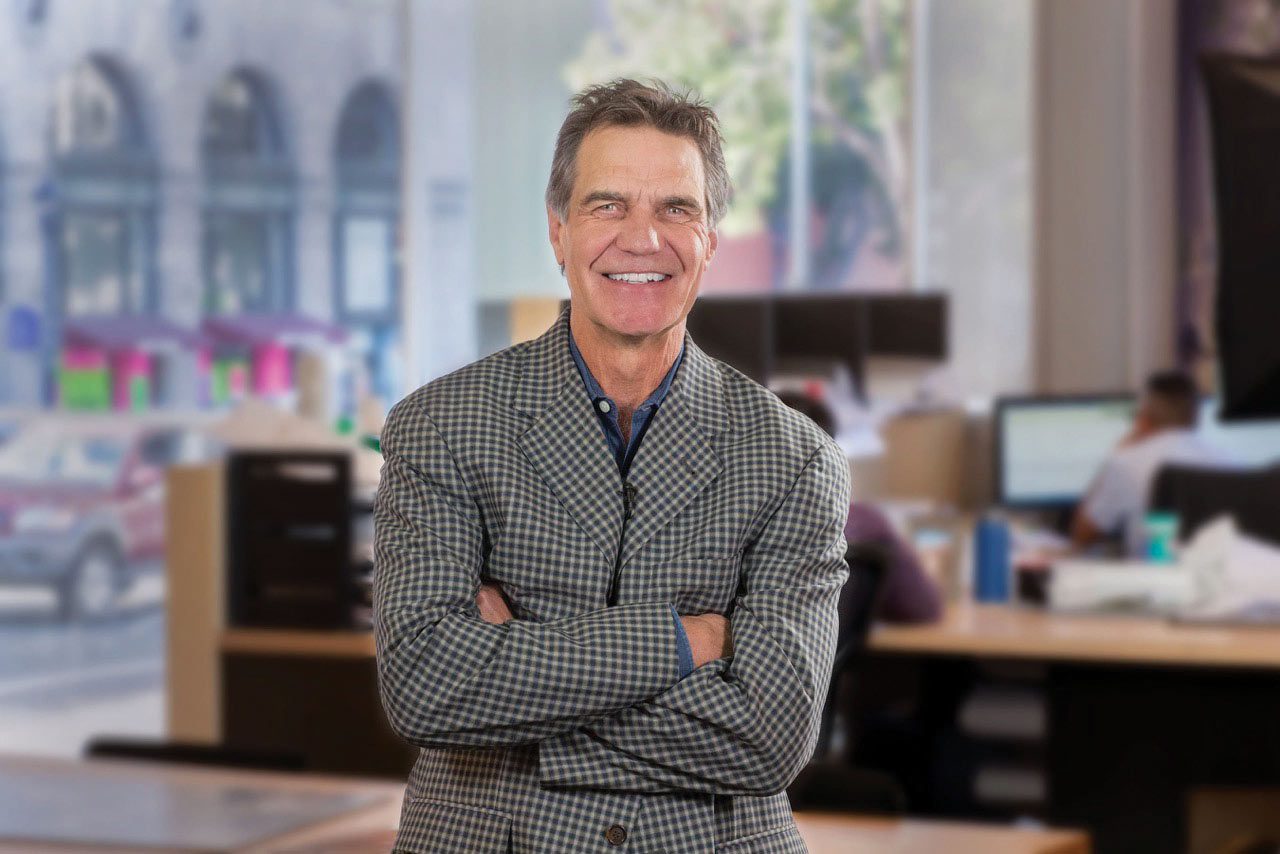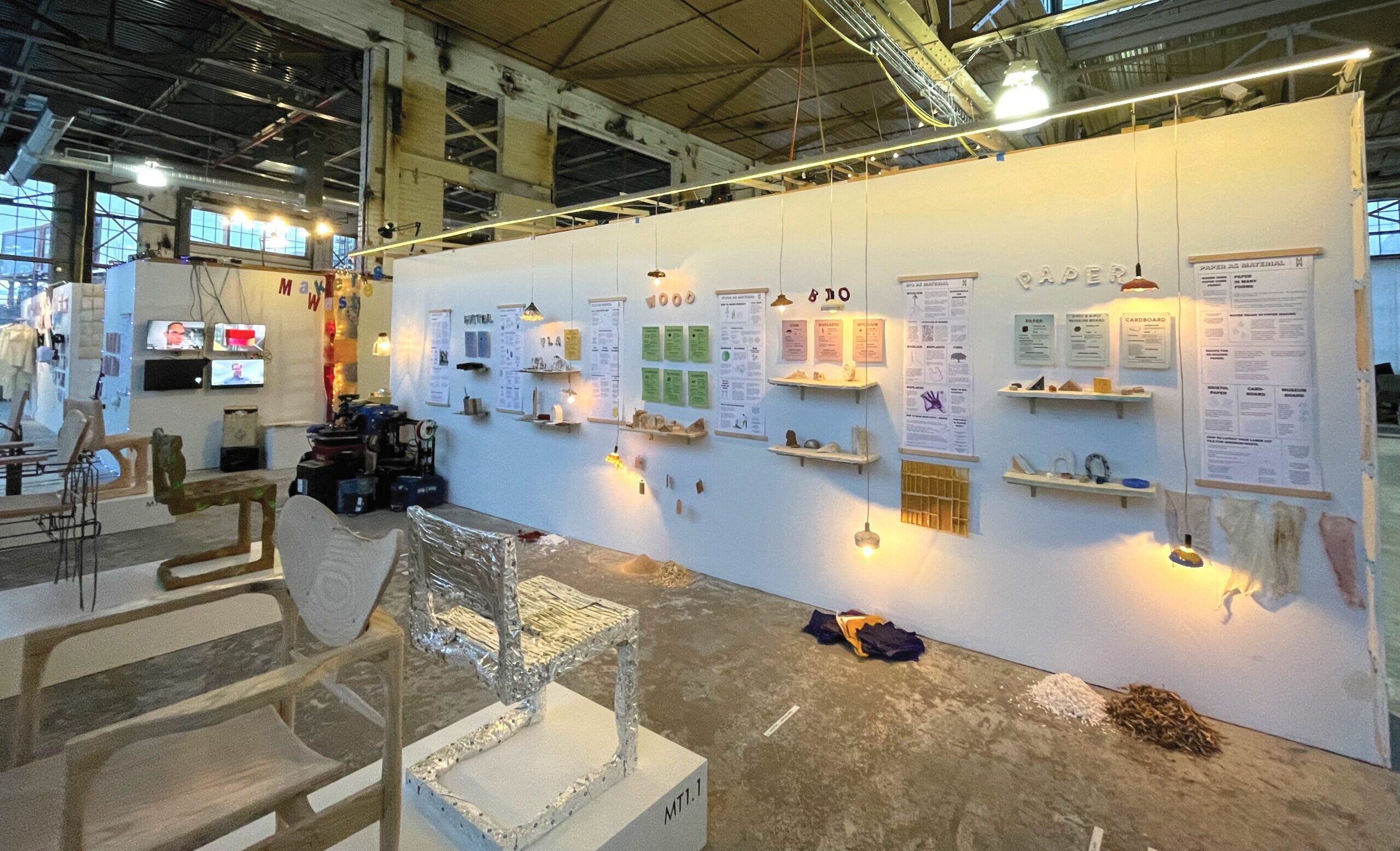By Amy Spooner
As a child growing up in Mt. Morris, just north of Flint, Michigan, Gordon Carrier regularly passed a one-of-a-kind yellow house while biking to town center. As it turns out, that house belonged to a local architect. “I remember I admired this house, as it was unlike any other in the neighborhood,” says Carrier, B.S. ’79, M.Arch ’81. “However simplistic, it was my first exposure to the power architecture can have on an individual.”
Today, as design principal of Carrier Johnson + CULTURE (headquartered in San Diego), Carrier is drawn to the search for unique architectural outcomes through research-based client engagement — not to elicit a design “wow” factor but to reveal the genuine spirit of a specific client’s need. “If we successfully discover that which is unique about our client, i.e., their CULTURE, how could the resultant building solution resemble any other?” he says.
Carrier believes an organization’s CULTURE defines its unique offering and spends concentrated time revealing his clients’ project desires, while continually assessing and tuning the CULTURE inside the firm. It’s also why Carrier and his partner, Michael Johnson, added “+ CULTURE” to their firm’s name in 2007: the word represents their passion to pursue that which represents the unique in a given commission. “We don’t believe powerful design solutions derive from collateral design elements like style, material, furniture systems, or an interesting form viewed in isolated fashion,” Carrier says. “Rather, we believe strong design reveals itself through identifying and leveraging an organization’s CULTURE, no matter the client. This is what sets every client, firm, and organization apart. We have to find it.”
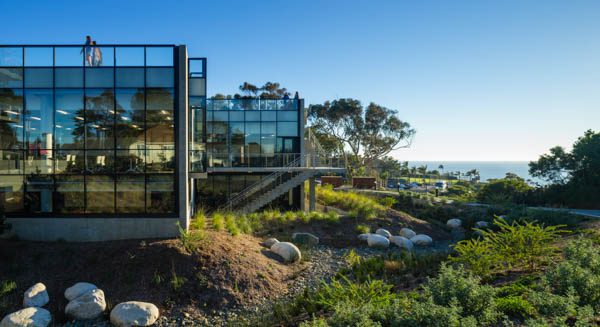
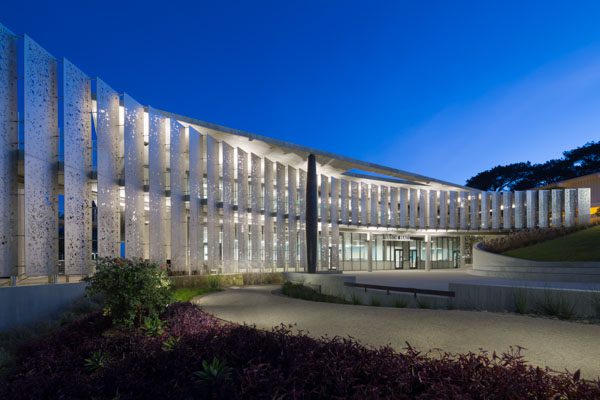
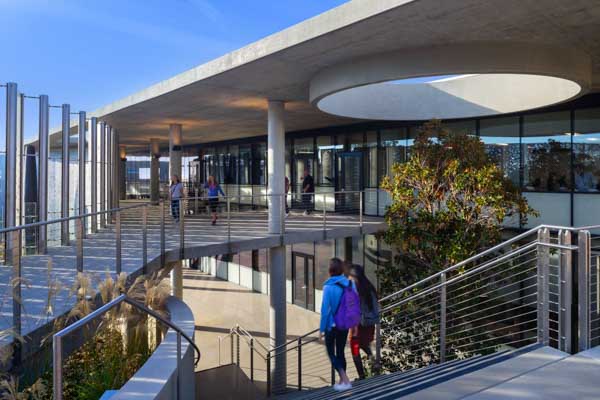
The Point Loma Nazarene University Science Complex has earned national and international acclaim.
That approach has been highly successful in San Diego and elsewhere. Carrier Johnson + CULTURE has long been recognized as a leading architectural firm in San Diego and has additional footprints in New York, Los Angeles, and Seattle. Aside from its west coast influences, Carrier Johnson + CULTURE’s design team has planned and designed developments in the United Arab Emirates, China, Costa Rica, Korea, Vietnam, and Africa, including hotels, corporate headquarters, exhibition facilities, and urban mixed-use developments. Carrier Johnson + CULTURE’s work has been featured in numerous publications, including Architectural Record, and it is a perennial part of Building Design + Construction Magazine’s Giants 300 Report, Architect Magazine’s Architect Top 50 list, and ENR’s Top Design Firms. The firm and its design principals have received more than 210 awards for design excellence in architecture, interior design, and sustainable design.
“We believe strong design reveals itself through identifying and leveraging an organization’s CULTURE, no matter the client. This is what sets every client, firm, and organization apart. We have to find it.”
— Gordon Carrier, B.S. ’79, M.Arch ’81
Most recently, two projects have garnered significant praise: the Point Loma Nazarene University Science Complex in San Diego and the Robert Redford Conservancy for Southern California Sustainability at Pitzer College in Claremont, California. The Point Loma project was named Building of the Year for the West Region in Architect’s Newspaper Best of Design Awards Program; it also won the American Architect Award from the Chicago Athenaeum’s Museum of Architecture and Design and The European Centre for Architecture Art Design and Urban Studies, and it received an honorable mention in the educational building award category from the Architecture Master Prize.
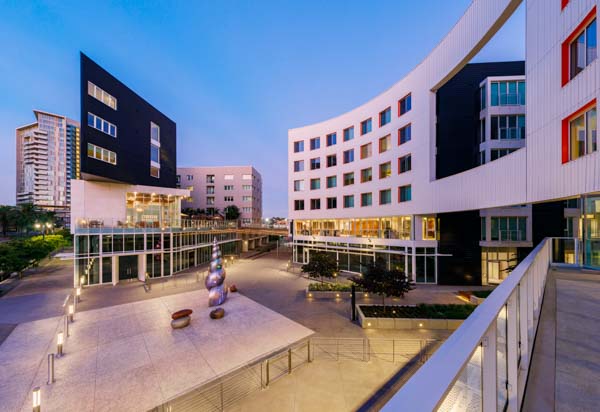
Ballpark Village.
The Robert Redford Conservancy for Southern California Sustainability is the first higher education building in California to receive zero net energy certification. It earned a Citation Award from the AIA Los Angeles and also won Project of the Year from the U.S. Green Building Council at its annual Sustainable Innovation Awards (SIA), as well as an honor award in the SIA’s energy and atmosphere category.
There’s a natural tendency to spend more energy making a building meaningful when you know who the end user is and what they represent and, as a result, can create a solution befitting their CULTURE.”
— Gordon Carrier, B.S. ’79, M.Arch ’81
The firm’s rise is more impressive when weighed against its financial condition when Carrier first became a principal in 1986. Carrier was working in Colorado Springs, Colorado, in the first branch office of what was then Buss Silvers Hughes & Associates, when his branch office’s success convinced the San Diego-based founding principals that the firm would be best served by relocating him to their headquarters. Soon after Carrier arrived in San Diego, he was surprised to discover that despite their strong design reputation, the firm’s seven-year history of poor management practices would soon lead to its financial implosion. As the firm neared bankruptcy, Carrier was asked to take the helm and was thrown into immediate, on-the-job training in how to run a business. Rule one? “Michael [Johnson] and I made a pact that we will always run a profitable firm, because if we don’t understand the economics of day-to-day practice, we’re putting our staff and client base in jeopardy,” Carrier says. “If we wanted longevity, we had to reframe the firm as a real business. Making beautiful buildings wasn’t enough.” The new partners also realized that part of the firm’s vulnerability stemmed from its reliance on a narrow client base, both in terms of location and project scope. “So we started interviewing for things the firm hadn’t interviewed for before,” says Carrier.
As a result, today Carrier Johnson + CULTURE’s portfolio is intentionally diverse: the firm works on interior design and urban design, in addition to a variety of architecture projects. This includes residential towers, offices, mixed-use developments, laboratories, hotels, libraries, civic centers, and correctional facilities. One of the firm’s current high-profile projects is development of a new 167-acre west campus for San Diego State University on land surrounding and including the stadium that was vacated when the NFL’s San Diego Chargers left town in 2017. Another is 7th & Market, a vertical city representing 10 different building types and including San Diego’s tallest building, covering an entire city block. In addition, Carrier Johnson + CULTURE recently completed downtown San Diego’s largest development, the 3.2-million-square-foot, mixed-use Ballpark Village. The San Diego Union Tribune dubbed it “downtown’s next big thing” when it broke ground in 2015. In contrast, Carrier also designed an award-winning, 550-square-foot prayer chapel for Point Loma Nazarene University on its oceanfront campus in San Diego. While smaller in scale than many of his other projects, he says it may have been one of the toughest projects he has ever done: “This small but important commission was about seeking an architectural clarity and simplification,” he explains.
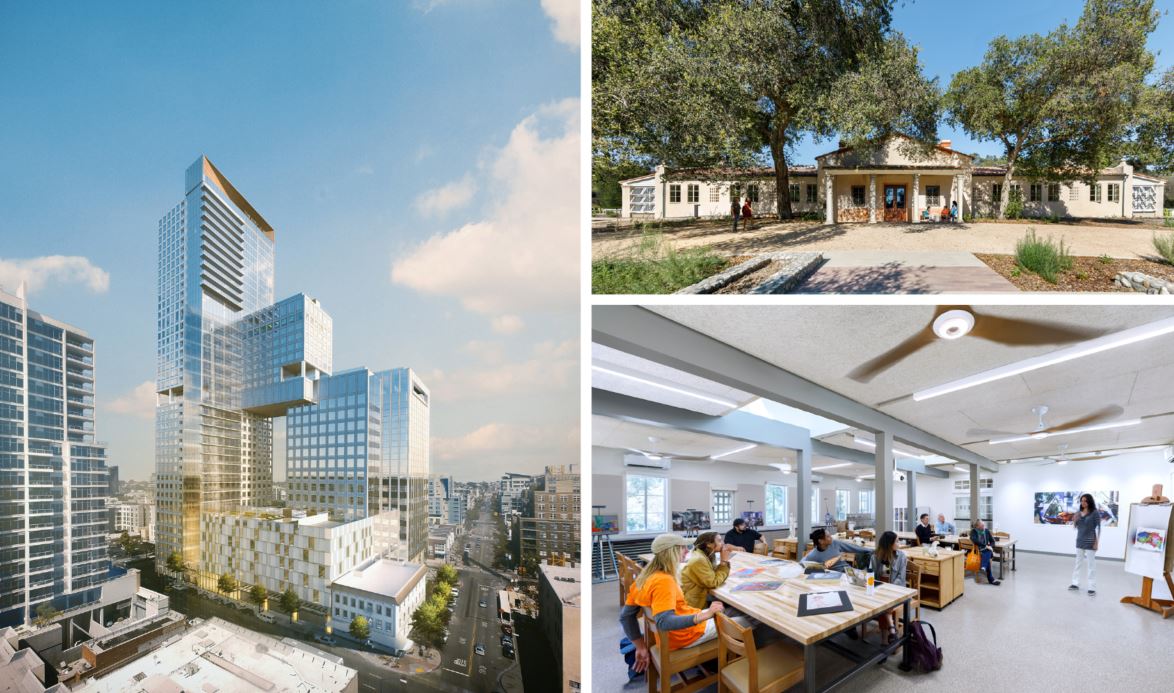
(From left) 7th & Market. Robert Redford Conservancy for Southern California Sustainability.
That notion of consistently drilling down to the meaning of a design challenge was inspired by Gunnar Birkerts, the internationally recognized, Eero Saarinen-mentored architect who taught Carrier at Michigan. The two went on to collaborate on numerous projects after Carrier graduated. “Frankly, he changed my life,” Carrier says. “He forced me to seek clarity of concept before anything else.” When Carrier and Johnson took over the firm more than 30 years ago, another early strategy was to deemphasize the prior firm’s focus on the developer enterprise and pursue projects for whom the end users are already known; hence the plethora of education and civic-based projects that anchor their portfolio. It’s another nod to the intentionality that Carrier learned from his mentor, Birkerts. “Speculative office buildings are largely about efficiency and sculpture, largely projects one observes, as opposed to structures that engage the user,” says Carrier. “There’s a natural tendency to spend more energy making a building meaningful when you know who the end user is and what they represent and, as a result, can create a solution befitting their CULTURE.”
Carrier’s core belief that understanding people and their culture lies at the heart of strong design thinking extends to those who create that design. In addition to design awards for its projects, Carrier Johnson + CULTURE has received numerous awards for offering professionals a great place to work, including being named San Diego’s most admired business/corporation.
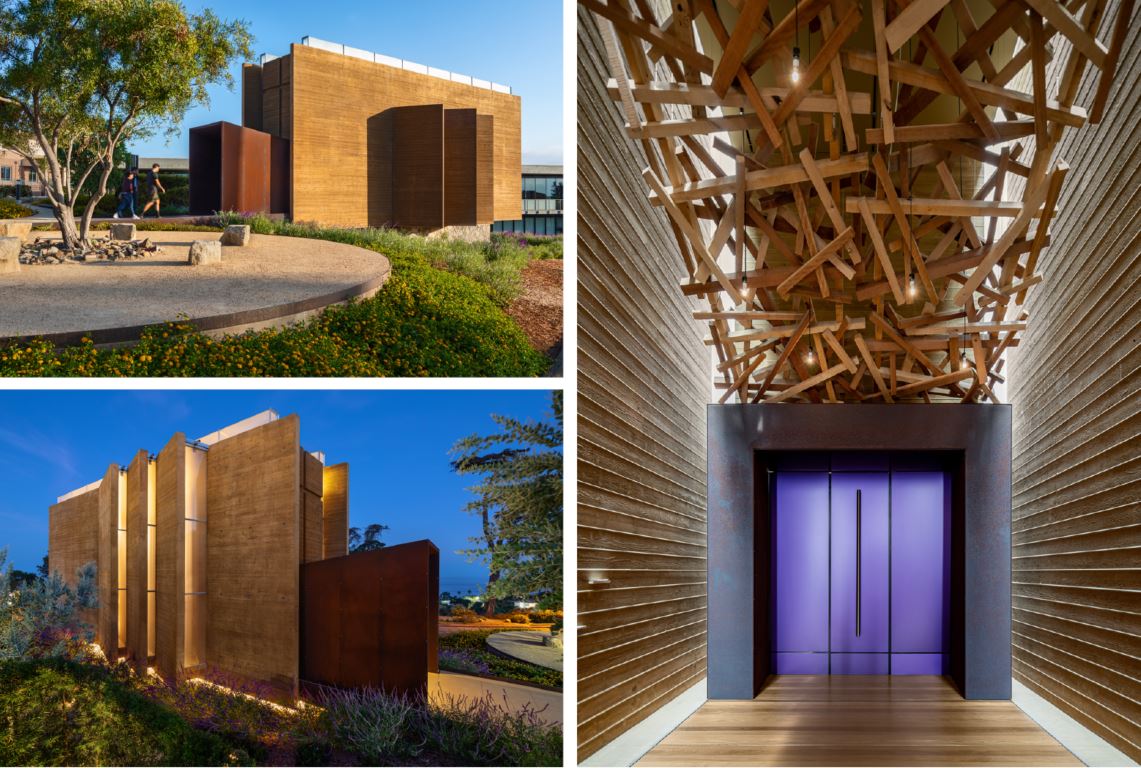
Carrier says the scale made the 550-square-foot prayer chapel for Point Loma Nazarene University one of the toughest projects he has ever done.
When it comes to design thinking and its staff, the firm tries hard to avoid silos. Carrier Johnson + CULTURE talents might be working on a high-rise one month and a library the next. Beyond running a good business by protecting the bottom line, the firm believes that “cross-pollinating” its people on a variety of project types makes them better able to serve all of their clients. “We are here to solve a client’s unique problem. Having done 15 of the same building type doesn’t always result in creative problem solving. In fact, it could be just the opposite, with tendency to lean on the last project as informant for the next. So we prefer the freshness of each opportunity,” Carrier says.
The firm also doesn’t believe in a top-down org chart; a junior associate or Carrier himself are seen as equally capable of contribution regarding best ideas. “Hierarchy is the enemy of collaboration,” Carrier says. “We don’t have a triangle of power, but rather a circle of design influence with everyone’s names inside of it, including mine.”
He sees that circle as his biggest legacy. “I’m most proud of the quality of the talent and the dialogue we have every day. Ours is an environment where people enjoy the art and process of design. There’s just no substitute for being in a place where all people are trying to make a project better.”

